Kingdom Animalia Order Lepidoptera Genus Choristoneura Higher classification Spruce budworm | Phylum Arthropoda Family Tortricidae Scientific name Choristoneura fumiferana Rank Species | |
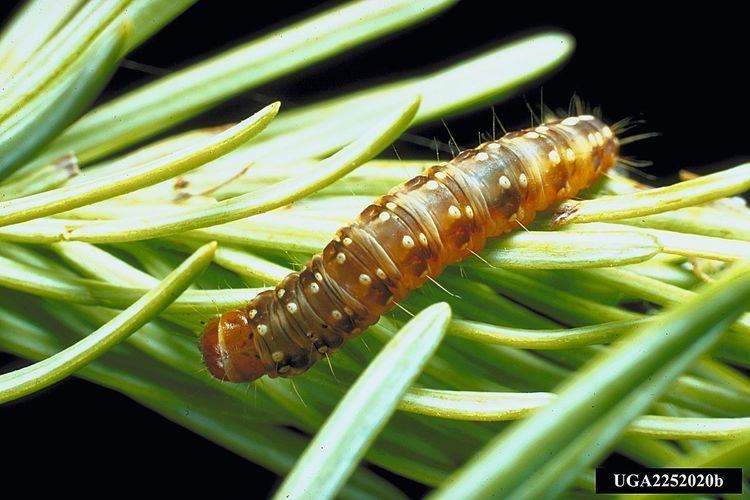 | ||
Similar Spruce budworm, Insect, Butterflies and moths, Tortricidae, Balsam fir | ||
Choristoneura fumiferana, the eastern spruce budworm, is a species of moth of the Tortricidae family. It is one of the most destructive native insects in the northern spruce and fir forests of the eastern United States and Canada. According to one common theory, popularized in the 1970s, periodic outbreaks of the spruce budworm are a part of the natural cycle of events associated with the maturing of balsam fir. The catastrophe theory of budworm outbreaks holds that particularly major infestations occur every 40–60 years, as the result of a cusp-catastrophe event, whereby populations jump suddenly from endemic to epidemic levels. An alternative theory holds that outbreaks are the result of spatially synchronized population oscillations that are caused by delayed density-dependent feedback (from various mortality agents) which are synchronized via a process of entrainment.
Contents

The first recorded outbreak of the spruce budworm in the United States occurred in Maine about 1807. Another outbreak followed in 1878. Since 1909 there have been waves of budworm outbreaks throughout the eastern United States and Canada. The states most often affected are Maine, New Hampshire, New York, Michigan, Minnesota, and Wisconsin. These outbreaks have resulted in the loss of millions of cords of spruce and fir. In 20th-century eastern Canada, the major outbreaks occurred in the time periods c. 1910-20, c. 1940-50, and c. 1970-80. Longer-term tree-ring studies suggest that spruce budworm outbreaks have been recurring every three decades or so since the 16th century. Paleoecological studies suggest the spruce budworm has been outbreaking in eastern North America for thousands of years.
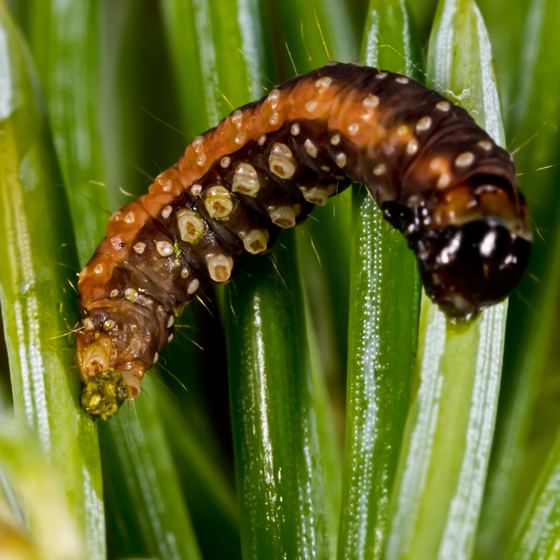
Taxonomy

When the spruce budworm, fumiferana (Clemens), was recognized as a Nearctic representative of the genus Choristoneura Lederer (Freeman 1947), the name applied to populations in a variety of geographic regions and biotopes. Later, C. pinus Free., a distinct form that feeds on pines was established as a separate species, but a large group in the western part of North America remained taxonomically undefined as the “western complex” (Freeman 1953), until Freeman (1967) established several new species. Field collections of late instar larvae of Choristoneura populations from a wide range of localities in a wide arc, from the Atlantic seaboard along the edge of the Laurentian Shield to the Mackenzie River area near the Arctic Ocean, yielded Choristoneura fumiferana (Clem.) sensu strico only from points east of the Rocky Mountain foothills (Stehr 1967). The 2-year-cycle budworm, C. biennis Free. occurs only in the Subalpine forest region (Halliday 1937, Rowe 1959), with alpine fir and interior spruce as hosts. Budworm populations from Rocky Mountain regions south of the area of introgressive hybridization of spruce differ from C. biennis (Stehr 1967). Other budworms are of little or no consequence with respect to spruces.
Outbreaks
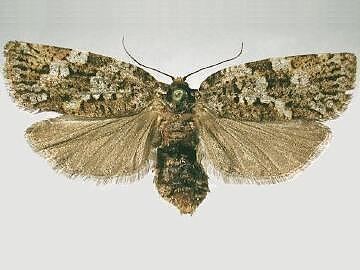
Massive outbreaks of spruce budworm occur irregularly throughout the range, but populations of this insect can remain at an endemic level for long periods (Blais 1985). In 1943, a continuing outbreak in Ontario and western Quebec was causing heavy mortality, particularly in stands of balsam fir (Atwood 1945): half of the 25 million cords (90,615,000 m3) of balsam fir standing in 1931 were estimated to have died or injured beyond recovery, while millions of cords of white spruce were also probably killed. Atwood also noted the increased difficulty of logging in budworm-affected stands as well as the increased risk of fire. Past outbreaks, instead of affecting the whole area subject to budworm infestation, have occurred in separate regions (Blais 1968). Within affected regions, epidemics did not recur regularly. In the lower St. Lawrence and Gaspé regions, for instance, radial-growth studies of balsam fir and white spruce confirmed outbreaks known to have taken place in the lower St. Lawrence in 1878 and 1912 (Blais 1961a). The Gaspé had been thought to have escaped those outbreaks, but Blais found clear evidence that the 1912 outbreak had covered more than 2 million ha in that region.
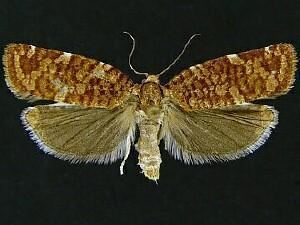
Further evidence obtained by Blais (1965) from determinations of radial growth on basal disks of balsam fir, white spruce, and black spruce (susceptible species), and non-susceptible white pine in the Laurentide Park, Quebec, led him to conclude that outbreaks had occurred about 1704, 1748, 1808, 1834, 1910, and 1947. The more recent outbreaks seemed to have been more severe than earlier ones, possibly, he suggested, due to an increase in numbers of highly susceptible balsam fir and a decrease in numbers of less susceptible white spruce following harvesting operations (Blais 1976).
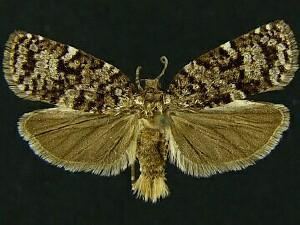
Evidence of a budworm attack in the Lake Nipigon region of Ontario contemporaneously with the 1704 outbreak in Quebec’s Laurentide Park was adduced by Turner (1952), based on the pattern of radial growth in a single 300-year-old white spruce that showed a characteristic budworm suppression pattern beginning in 1702 and lasting for 10 years (Blais 1962). Intensive searches failed to find other white spruce of similar age.
Spruce budworm outbreaks usually first appear in localized areas before spreading to immense territories (Blais 1961b). Population explosions can be astonishingly rapid. In the Kedgwick Lake area of Quebec, for instance, egg sampling in summer 1959 had indicated that budworm populations would be low in 1960, but a much higher than expected population developed in response to favourable weather and food conditions. Such situations are unlikely to recur frequently, but population spread through wind dispersal of small larvae is relatively common. Unfavourable weather in the spring can strongly influence both budworm and host development (Blais 1981a, Luciuk 1984).
Damage
The spruce budworm Choristoneura fumiferana Clemens (Lepidoptera: Torticidae), “the most destructive forest insect in North America” (Rose and Lindquist 1985), erupts periodically in massive epidemics in spruce–fir forests in northern and eastern Canada. Populations of spruce budworm vary in density over several orders of magnitude. Recorded densities in the boreal forest range from less than 0.01 (Miller and Renault 1976) to more than 100 larvae per 45 cm branch tip (Henry 1996).
Damage can begin even before buds have flushed. Early instar larvae mine and kill the buds. Late instar larvae are voracious and wasteful feeders, chewing off needles at their bases. In heavy infestations, old foliage is also eaten. Increment loss, tree deformity, and mortality follow several years of heavy infestation (Brown 1971, Blais 1980).
Defoliation of trees reduces their photosynthetic capacity and therefore curtails growth. In conifers, reduction in radial growth does not normally coincide with the first year of defoliation. For instance, the ring width of white spruce defoliation by the European spruce sawfly (Gilpinia hercyniae Htg.) showed reduced growth beginning in the year after defoliation; the reduction occurred throughout the stem but was greatest in the lower part (Reeks and Barter 1951). In a preliminary study, repeated severe defoliation of white spruce by the spruce budworm was not reflected in reduced radial increment at breast height during the first 3 or 4 years (Blais 1954). But in the Lac Seul infestation in northwestern Ontario, apparent radial growth suppression at breast height in white spruce first occurred in the 2nd year of severe defoliation in 2 plots and in the 3rd year in 1 plot (Blais 1958a).
Forest production in central New Brunswick would have been reduced to 20% of normal, with a loss of some 2400 man-years of employment annually, had not the program of spraying against the budworm been carried out (MacDonald 1968). The cost of the program, $11,600,000 for 1952 to 1958 and $10,200,000 for 1960 to 1967, was but a small fraction of the value of the resource saved.
Range
The range of the insect coincides with the range of its hosts. In Ontario, the spruce budworm oviposits on needles of host trees in late June/early July. Large numbers of egg masses are deposited on the peripheral shoots of the crown. The number of eggs per egg mass varies from 1 to about 60, but commonly averages 20 (Sanders 1991). About 90 parasitoids have been collected from spruce budworm in eastern North America. Henry (1996) found the suite of parasitoids collected from spruce budworm in isolated white spruce plantations in southern Ontario differed from the usual suite of parasitoids found in the boreal forest.
Control
Pest management implies some manipulation of the environment to adversely affect an organism that is using it in a way that is incompatible with our own use (MacDonald 1968). The manipulation is effected through cultural practice, or by the introduction of a regulatory agent such as a predator or an insecticide. In regard to massive outbreaks, the use of insecticide is the only practical method of crop protection.
In New Brunswick, over 3,600,000 ha was sprayed at least once between 1952 and 1967 (MacDonald 1968). Most of the sprayed forests were still “in good condition” in 1968, and, although a scattering of dead trees occurred throughout the region, in no case did mortality destroy a major operating unit or disrupt a long-term management plan. In contrast, mortality in 2 unsprayed check areas, each 155 km2, exceeded 65%.
The effectiveness of inundative releases of Trichogramma minutum Ril. for biological control of Choristoneura fumiferana was investigated by Smith et al. (1986) in the Canadian boreal forest in 1982–83. The time of release, parasite density, and local weather were the most significant factors affecting the level of egg parasitism. The food supply of adult female parasites, vertical location of the host egg-mass in the stand, intensity of solar radiation and density of the host were less important. Parasitism of eggs was similar on white spruce and balsam fir. Parasites reared at different temperatures and on different host eggs differed in biological characteristics, with undetermined effects on the success of field releases. Geographical strains of Trichogramma minutum were not considered as important as rearing conditions in subsequent releases because of the high degree of individual variation within each strain.
